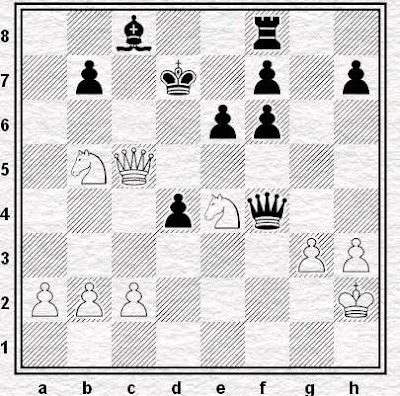In this episode we go back to Hereford for our third visit, as we continue our exploration of the life, works and milieu of Thomas Leeming. He was the painter of two versions of a tableau depicting various gentlemen of Hereford playing chess in 1815.
Or perhaps three versions; though the third one is partly, if not entirely, by another hand, or so we think. This version, which we haven’t shown for several blogs, could be an interpretation-cum-copy, and as copying is going to be the theme of this blog, here it is again:

While it may not do full justice to the original, it serves by showing the main features of the composition. You can compare the other versions here.
Readers of our previous blogs will know that we discovered, following our second visit to Hereford, that in 1817 Leeming was commissioned to copy an old master painting of Christ Carrying His Cross as an altarpiece for the Cathedral. It was thought in Leeming’s time that the original, in Magdalen College Oxford, was by the Spanish 16th Century artist Franciso Ribalta.

But Mr Darwall-Smith of the Magdalen College Archive, whose advice we sought, referred us to an authoritative lecture delivered in 1955 by eminent art historian T.S.R.Boase which rejected the Ribalta attribution, proposing instead another Spaniard: Valdés Leal.
Irrespective of who painted the original in Oxford, the Leeming full-size copy was still, said the Cathedral Archive, with them in Hereford. So now, in March 2011, we are back, and this time with an appointment to see the whopping six by five foot chunk of Leeming in the flesh. It may only be a copy of a Spanish old master painting, we tell ourselves, but it is the next best thing to a Leeming original.
Before our visit to the Cathedral we renew our acquaintance with Catherine Willson in the Hereford Art Gallery; we meet for the first time the local historian David Whitehead, who has generously shared his thoughts with us about the members of the Hereford Chess Club in 1815, among other things; and we have another peep at the painting and the two lesser Leemings in the Gallery’s collection. Seeing the chess painting again we are struck by the skill and clarity in the portraiture and other details, including the chess position (which we analysed in our last episode), and the endearing pooch, who gazes at us so beguilingly.

Catherine joins us in the visit to the Cathedral, and we meet Rosalind Caird of the Cathedral Archive, who is most helpful with her encyclopaedic knowledge of the Cathedral’s history. She takes us to the North transept where, hanging high some fifteen feet above us and gazing down humbly onto a workaday storage area, is Leeming’s copy of the Magdalen altarpiece.

But what is an altarpiece doing there, we wonder. Well, Ms Caird explains, it was indeed initially installed behind the Cathedral’s main altar, framed by panelling, or “wainscoting” as it was then called, but was relocated when the arrangement was changed in 1841.
Boase’s lecture also refers to Leeming’s copy having been removed in this 19th Century makeover. He says that none other than Gothic Revivalist Augustus Welby Northmore Pugin (aka “God’s Architect” and one of the driving forces behind the design of the Palace of Westminster as we see it today) gave the full ensemble the thumbs down in 1836, contrasting it unfavourably with Durham Cathedral’s Gothic equivalent. Pugin made his point with this illustration, which shows Leeming’s copy in pride of place.

Whatever Pugin’s opinion of the wainscoting, the Institute of Thomas Leeming Studies invites readers to join with us in relishing Leeming’s contribution to the overall effect. Just imagine his magnum opus in its glory days standing tall as the focal point of a panelled screen filling the altar crossing at the end of the Cathedral nave. This is the vista it would serve:

To round-off our third visit to Hereford we have just enough stamina left to meet Alan Leary and Ray Collett, the modern day gents of Hereford and Worcester chess, in the Cathedral tea room. We chew the chess fat, and ruminate on the significance of November 2012 – the bicentenary of the inauguration of the first edition of the Hereford Chess Club (as recorded on the original lining of Leeming’s canvas) and the 50th anniversary of its third edition. This happy co-incidence will call for a celebration!
Our next episode will be on 14 May, when we will take a look at some of the other characters in Leeming’s tableau.
Acknowledgements
Magdalen College photo: Ryan Harrison on Flickr
Hereford Cathedral photo: Mark Edwards
References
T.S.R. Boase. (1955) Christ bearing the Cross: attributed to Valdés Leal at Magdalen College, Oxford: a study in taste. OUP.
A.W.N.Pugin. (1836) Contrasts; or, A parallel between the noble edifices of the fourteenth and fifteenth centuries and similar buildings of the present day. Shewing the present decay of taste. Accompanied by appropriate text. London
Every Picture Tells A Story Index
Chess in Art Index































